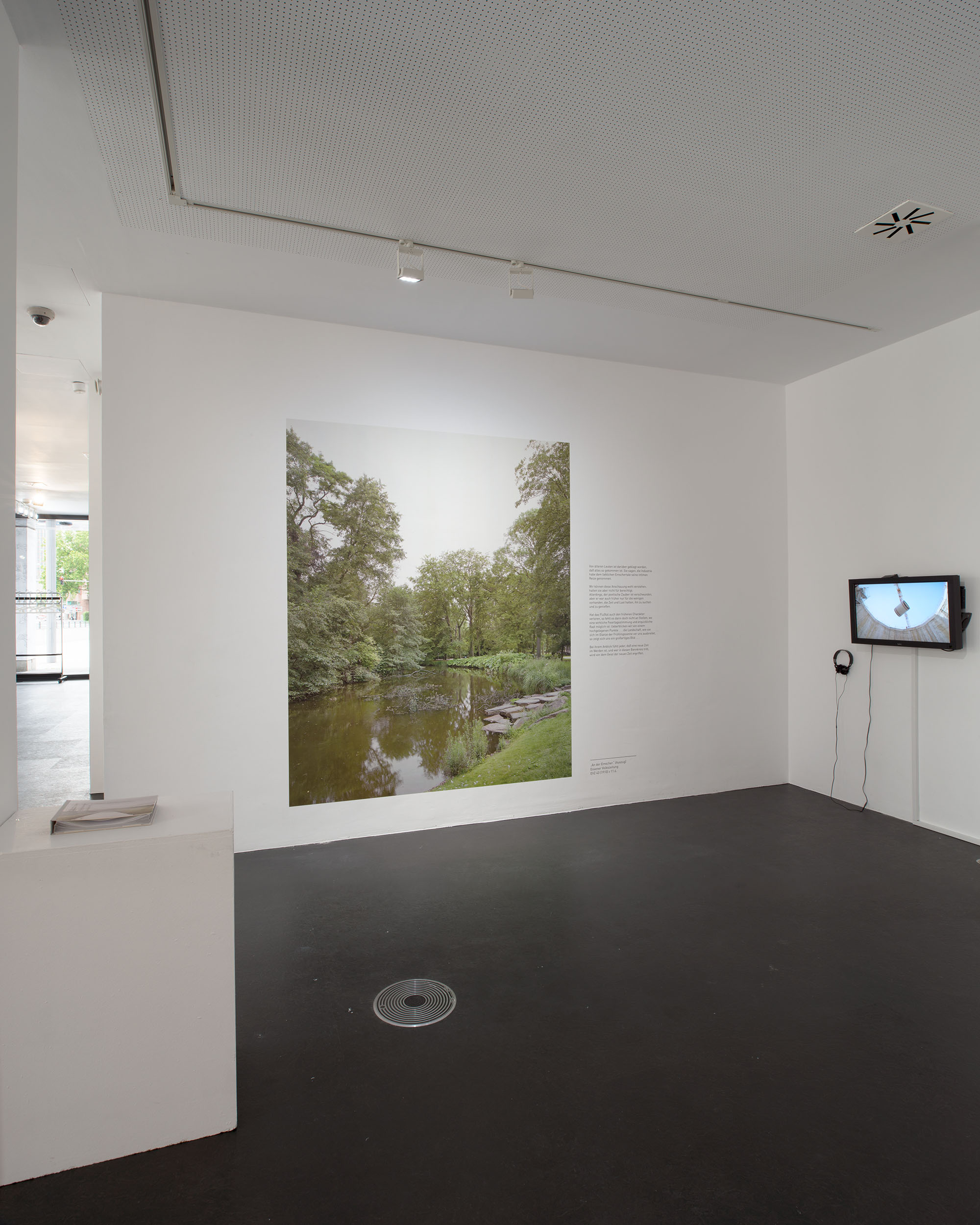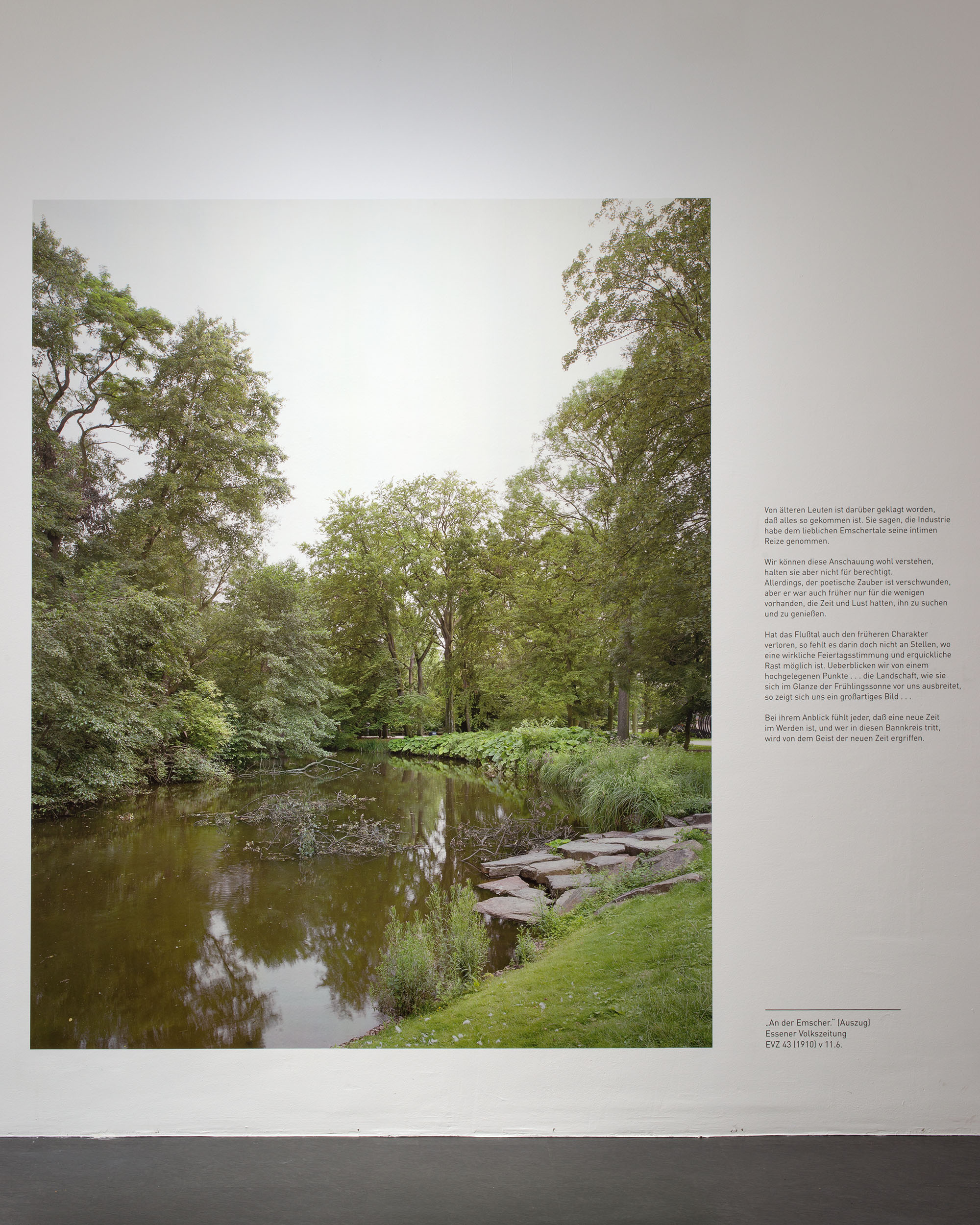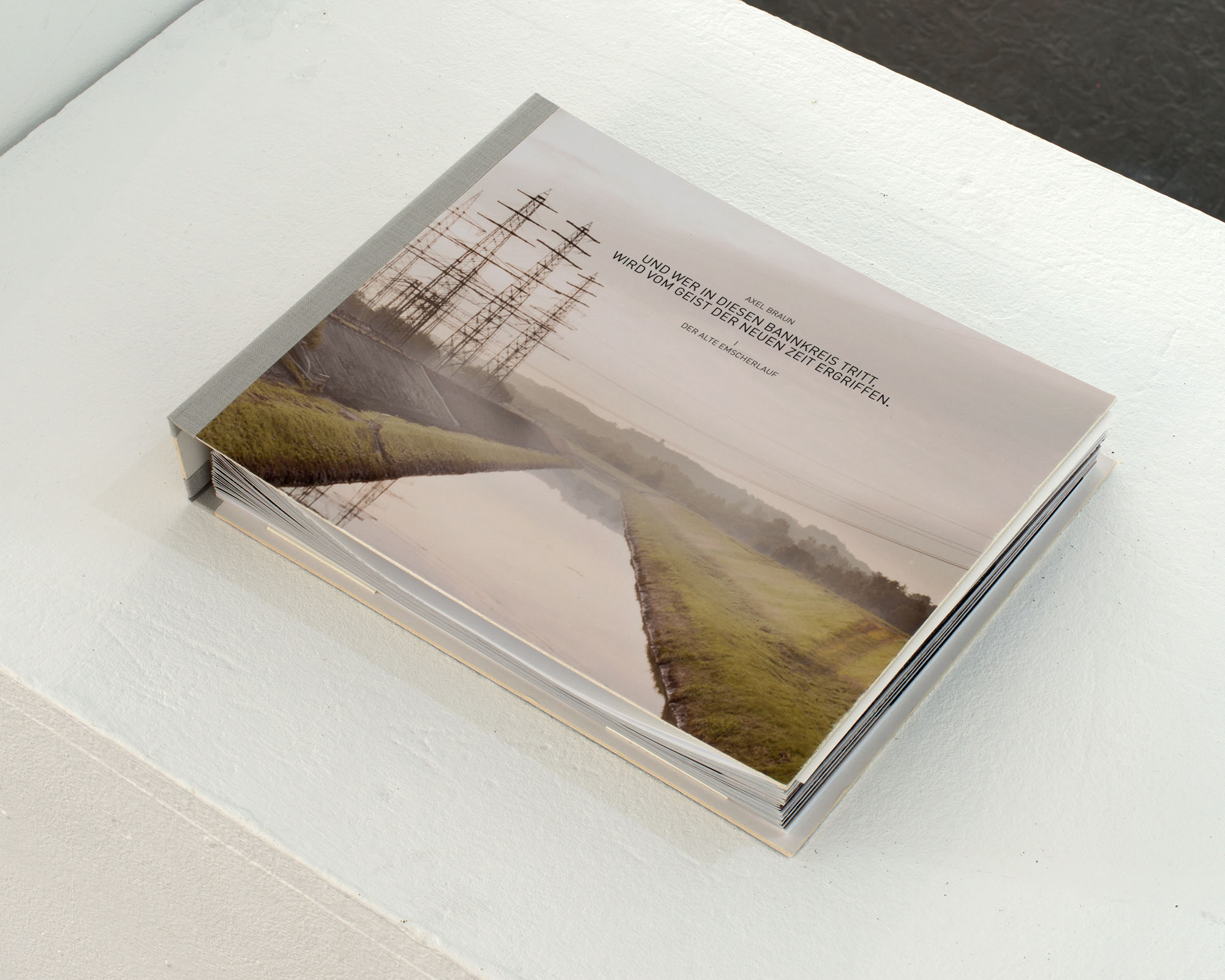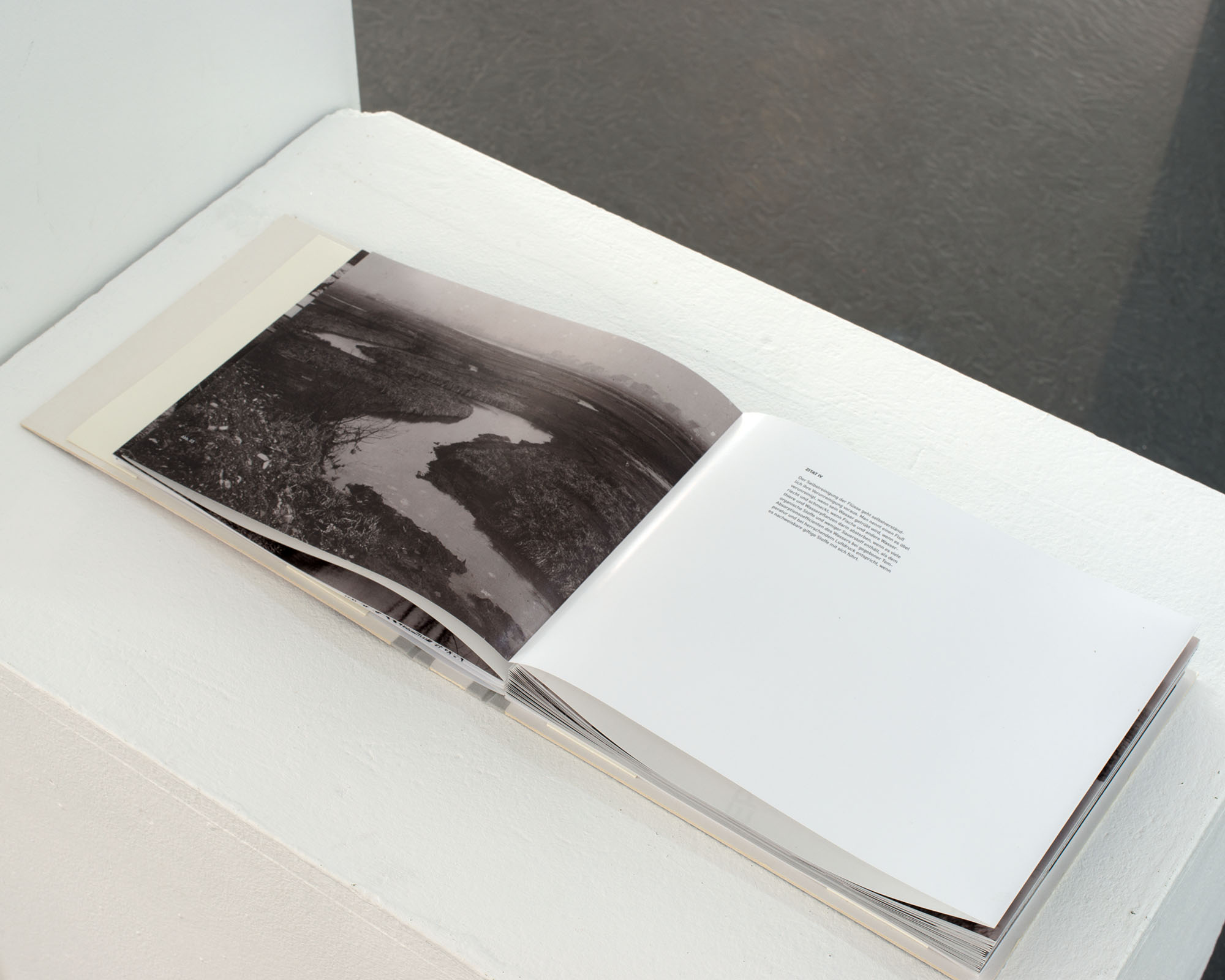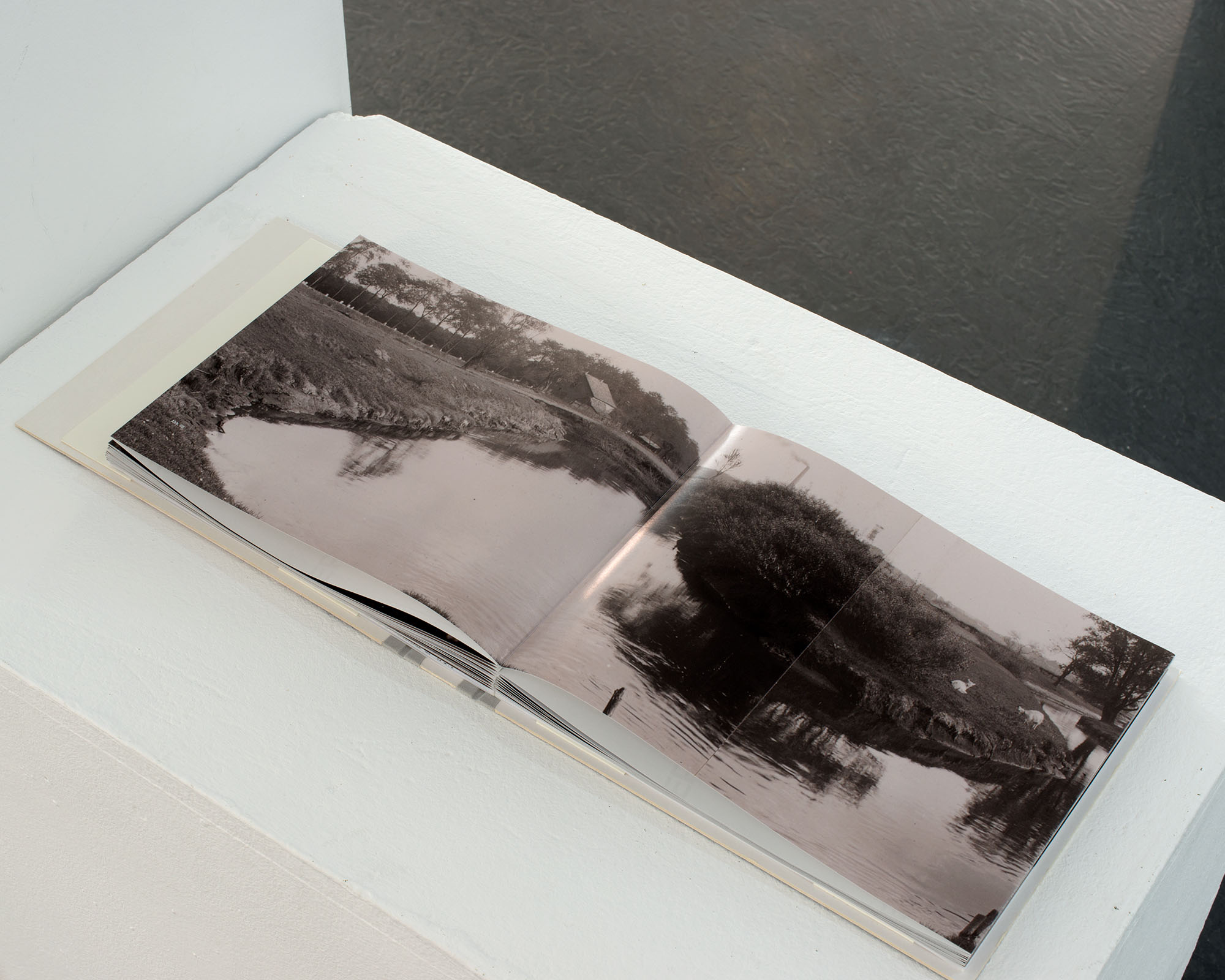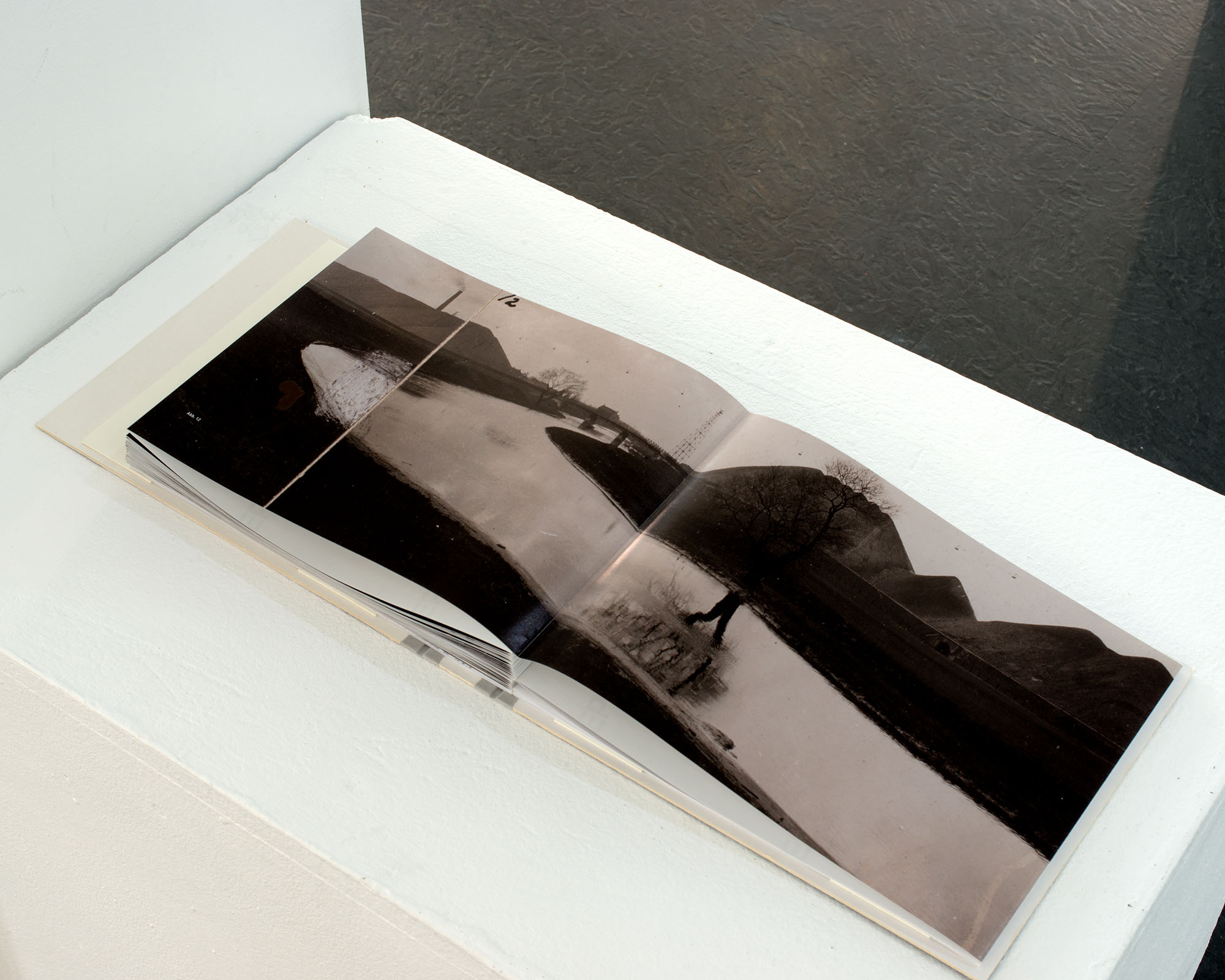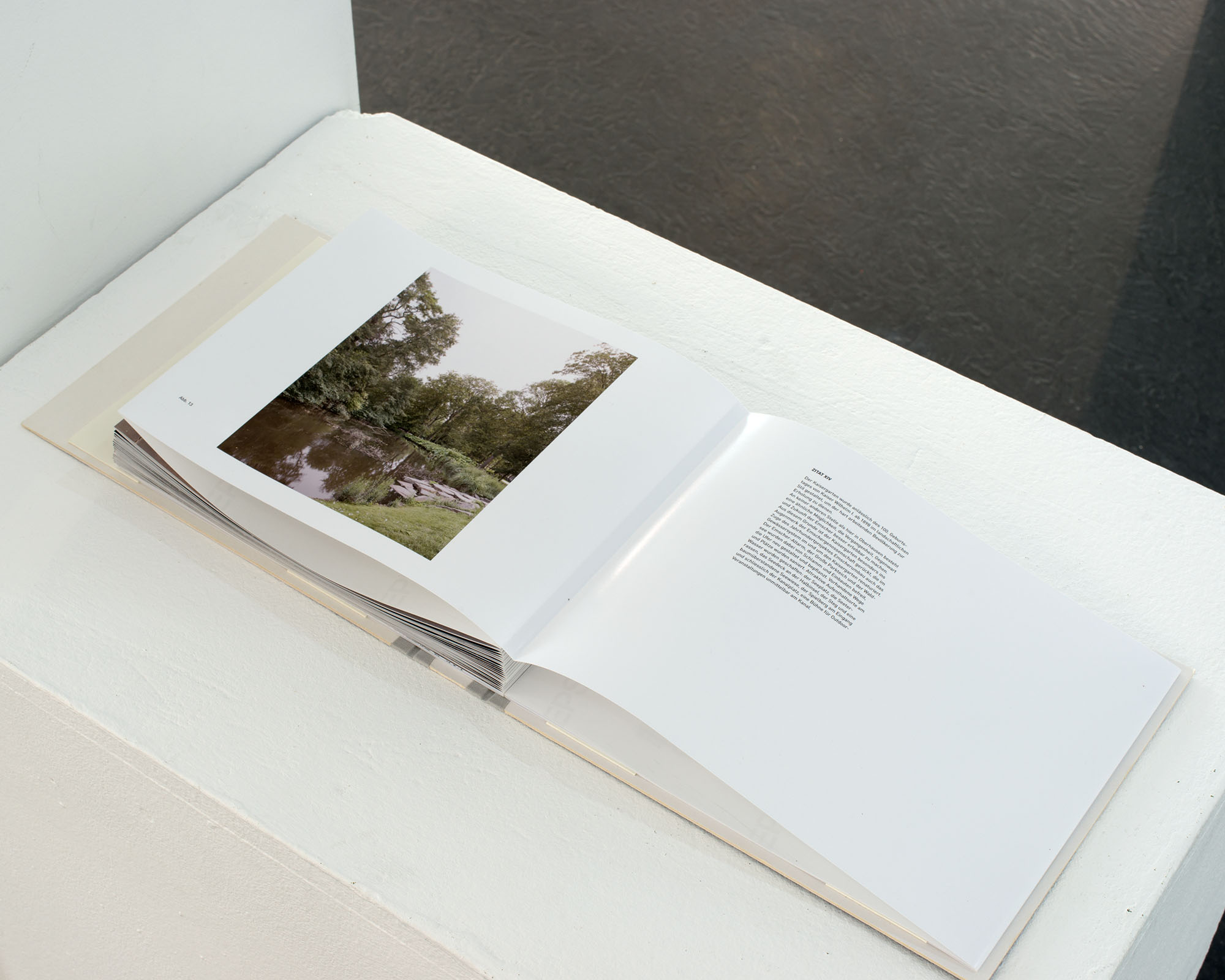The case study for DISTURBED HARMONIES [ANTHROPOCENE LANDSCAPES] deals with the past, present and future of the river Emscher in the Northern Ruhr area, Germany’s former centre of mining and heavy industries. Due to the disastrous effects of industrialisation, the river became a technological device and served as an open sewer during the twentieth century. Since the end of coal mining, the region has been transformed into an even more complex hydro-engineering system that allows for the restoration of landscapes with more natural appeal.
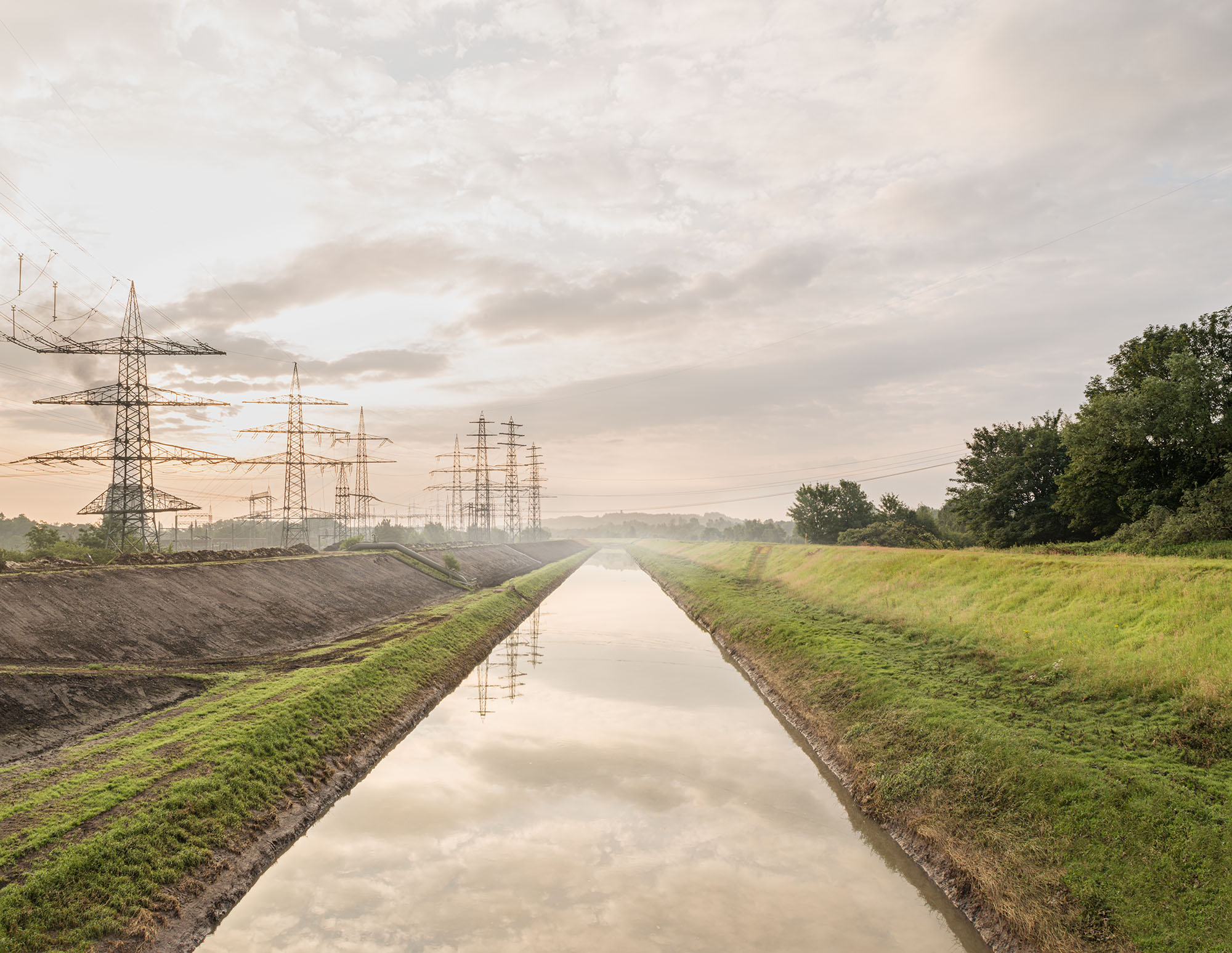
There have been complaints by elderly people
that everything has developed to its current state.
They say the industry has taken away the intimate appeal
of the lovely Emscher Valley.
Indeed, we can understand this point of view,
just we do not see it justified.
Of course, the poetic charm has disappeared,
but even before, it was just present for those few
who had time and delight in searching and enjoying it. [...]
Overviewing the landscape from an elevated point [...]
[still] reveals a fabulous image [...]
At its glance, everybody feels that a new time is coming,
and those who step into this realm
will be enchanted by the spirit of a new age.
__________________________________
“An der Emscher,” Essener Volkszeitung, Stadtarchiv EVZ 43 (1910) v 11.6., Haus der Essener Geschichte, translation: Axel Braun
Chaos/Control, Dortmunder Kunstverein; 2015, May 30 – July 12
Photo wallpaper, wall text, FullHD video, artist book
The Emscher River in the Northern Ruhr area, Germany’s former industrial centre, was a shallow stream that found its meandered course through forests and flood plains until the nineteenth century when industrialisation changed its fate within decades. Already heavily polluted by unfiltered industrial and domestic sewage waters from the growing agglomeration, the river became increasingly affected by submergences of ground that facilitated floods and turned whole parts into toxic lakes and swamps. At a time when smoking chimneys were a symbol of power and prosperity, a dying river would not have been a reason for concern until that is, the calamities became a threat to industrial assets and workers’ health. After years of debates about who should cover the costs, a cooperative of private and public stakeholders was formed at the beginning of the twentieth century.
The only solution for the disastrous situation was full canalisation and diking of the river, relocation of the estuary, and the establishment of hundreds of pumping stations. After completion, the resulting hydro-engineering system served as the main open sewer for the entire industrial region during the rest of the twentieth century.
Since coal mining ended, an even higher technological effort has been undertaken to disentangle river and sewage water again by drilling a seventy-kilometre-long tunnel and reshaping sections of the river landscape to achieve a more natural appeal. The only remaining branch of the original river that survived as a pond in a park was restored in 2010. Although now stagnant, it is a lone memorial to a lost river and landscape.
Axel Braun, VI – Rohrvortrieb, FullHD video, 2014 (excerpt)
The selection of historical photographs and quotations presents the river in its original meandering course. Increasingly, signs of industrialisation and deterioration become visible in the landscape. Although the river looks relatively idyllic in some images, it has already been highly polluted and frequently caused diseases in the densely populated industrial area.
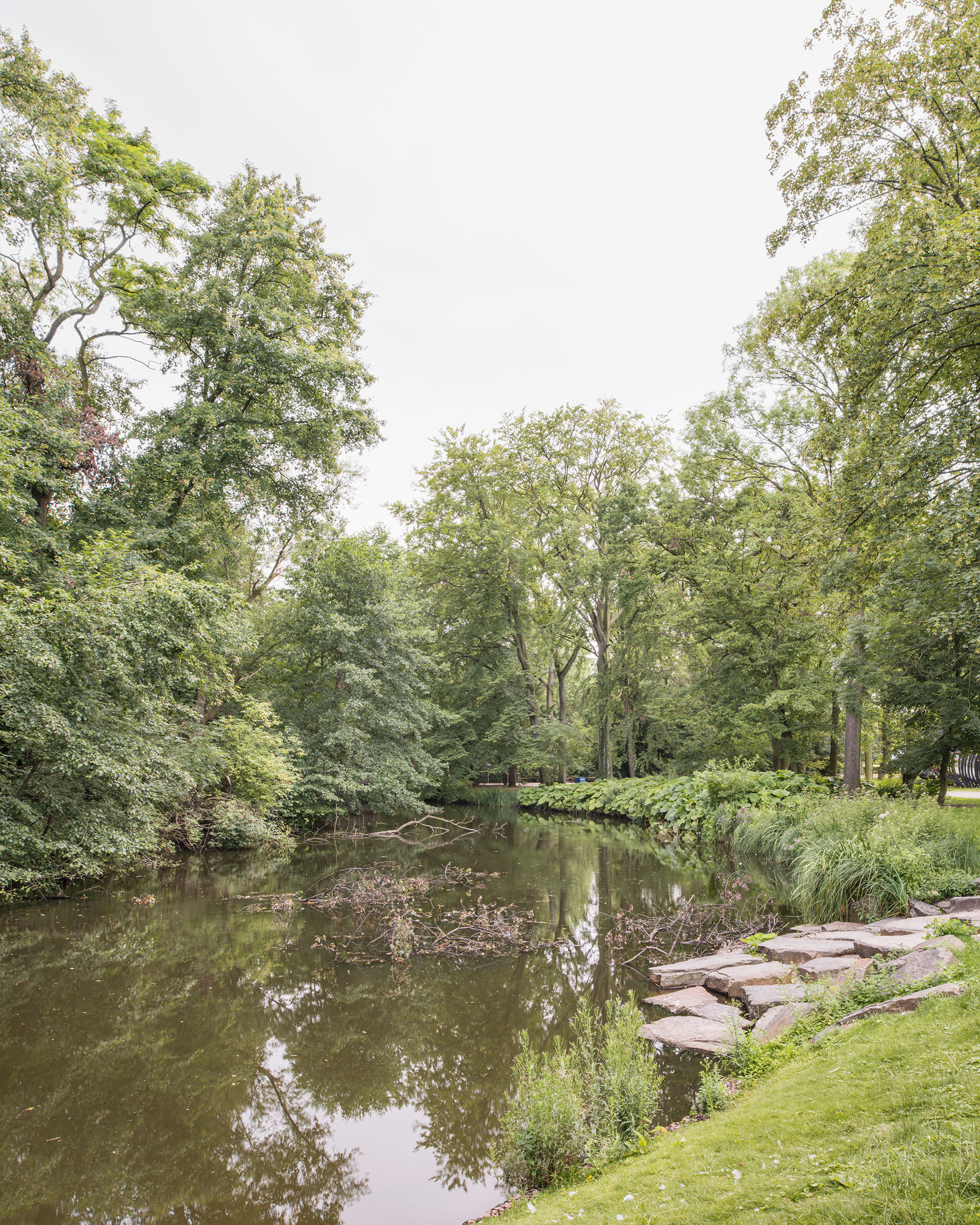
Axel Braun, VI – Rohrvortrieb, FullHD video, 00:19:35, 2014

Chaos/Control, Dortmunder Kunstverein; 2015, May 30 – July 12
Axel Braun, VI – Rohrvortrieb, FullHD video, 2014 (excerpt)
The project was supported with the concept prize Bridges Emscher Zukunft by Emschergenossenschaft in 2012.
